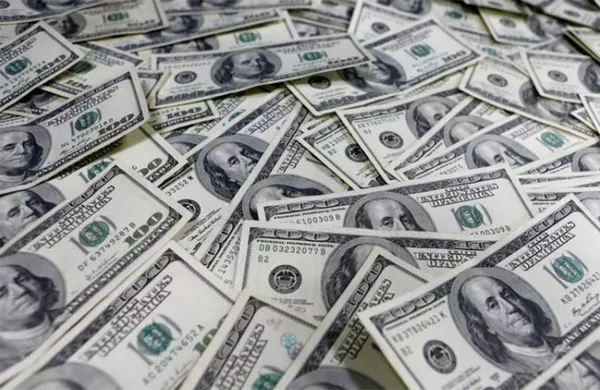In the realm of U.S. currency, one intriguing aspect that captivates both collectors and curious minds is the highest denomination of dollar bills. The United States has a rich history of currency design and evolution, with various denominations reflecting the economic landscape of their respective eras. In this article, we delve into the highest dollar bill amount ever issued, examining its history, significance, and the factors that led to its eventual discontinuation.
The Grandeur of the $100,000 Bill:
The $100,000 bill stands as the highest denomination of U.S. currency ever produced. This mammoth bill, featuring the portrait of Woodrow Wilson, the 28th President of the United States, was not intended for public circulation. Rather, it was a Gold Certificate issued in 1934 and was primarily used for transactions between Federal Reserve Banks. Consequently, these bills were not available to the general public and did not facilitate day-to-day transactions.
Origins and Purpose:
The issuance of the $100,000 bill was closely tied to the economic challenges faced by the United States during the Great Depression. At the time, the Federal Reserve Banks required a more efficient means of transferring large sums of money between themselves. To address this need, the U.S. Treasury introduced high-denomination Gold Certificates, streamlining the interbank transfer process.
Design and Features:
The $100,000 bill is an imposing piece of currency, measuring approximately 8.5 by 19 inches – much larger than the familiar dimensions of today’s circulating bills. Its aesthetic features are reminiscent of other denominations from that era, adorned with intricate engravings and the distinguished portrait of President Woodrow Wilson.
Moreover, the bill bore the inscription “The United States of America – One Hundred Thousand Dollars,” emphasizing its colossal value. To ensure security and prevent counterfeiting, advanced anti-counterfeiting measures, such as intricate designs and watermarks, were incorporated into the bill’s production.
Limited Circulation and Collection:
Given its intended purpose, the $100,000 bill had an exceedingly limited circulation. Its usage was confined to transactions between Federal Reserve Banks, making it a rarity even during its time of issuance. As a result, very few individuals ever had the opportunity to witness, let alone possess, this remarkable piece of currency.
In contemporary times, the $100,000 bill has become a prized collectible, sought after by numismatists and currency enthusiasts. Its scarcity and historical significance contribute to its high market value, with some specimens fetching impressive sums at auctions and private sales.
Discontinuation and Removal from Circulation:
The discontinuation of the $100,000 bill was intertwined with the evolving financial landscape of the mid-20th century. As the United States transitioned to a more modern and efficient banking system, the need for such high-denomination bills diminished. With the advent of electronic fund transfers and advancements in banking technology, the $100,000 bill became obsolete.
In 1945, as part of a broader effort to streamline the nation’s currency and reduce printing costs, the U.S. government officially discontinued the issuance of high-denomination bills. This included denominations ranging from $500 to $100,000. While these bills remain legal tender, their rarity and the cessation of their production make them highly coveted among collectors.
Legacy and Impact on Currency Design:
The legacy of the $100,000 bill extends beyond its limited usage and collectible appeal. Its existence highlights a pivotal moment in U.S. monetary history, serving as a testament to the adaptability of the nation’s currency in response to economic challenges.
The removal of high-denomination bills from circulation also influenced subsequent currency designs. Modern U.S. banknotes, such as the $100 bill, incorporate advanced security features and intricate designs aimed at preventing counterfeiting while maintaining aesthetic appeal. The evolution of currency design reflects the ongoing efforts to balance functionality, security, and artistic elements.
See Also How Much Is A 1976 Two Dollar Bill Worth
Conclusion:
The $100,000 bill stands as a captivating artifact from a bygone era, embodying the economic challenges and innovations of the Great Depression. While its limited circulation and discontinuation may seem distant from the current state of U.S. currency, the legacy of this high-denomination bill endures through its collectible allure and its impact on the evolution of currency design.
As we reflect on the history of the highest denomination of U.S. currency, it serves as a reminder of the dynamic nature of monetary systems, responding to the ever-changing needs of a growing and evolving nation. The $100,000 bill, once a practical tool for interbank transactions, now finds itself enshrined in the annals of numismatic history, a testament to the resilience and adaptability of the United States’ monetary system.


